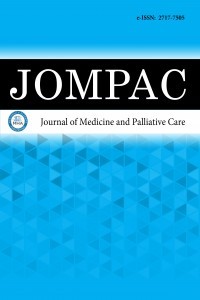Hipnoz ve bilimde kullanım alanları
Hipnoz, kişinin farkındalığı korunarak iç deneyimlerine yöneldiği ve telkin kabul edebildiği bir durum olarak kabul edilmektedir. Yapılan çalışmalar hipnozun sinirsel korelasyonları hakkında kapsamlı bilgiler sunmakla birlikte hipnoz çalışmaları karmaşıktır. Bağlam, beklenti ve kişilik gibi birçok faktör, hipnotik yanıtı ve kullanılan önerileri etkilemektedir. Hipnoz günümüz tıp dünyasında aneljezi ve ağrı yönetimi, davanmış ve kaygı bozuklukları, cinsel işlev bozuklukları, diş hekimliği problemleri, bağımlılık vb. gibi durumlarda tedavi ve terapi amacıyla sıklıkla kullanılmaktadır. Hipnoz, güncel bilgiler rehberliğinde tıp, diş hekimliği ve ruh sağlığı profesyonellerinin tedavi ve terapilerde elini güçlendirebilecek çok değerli bir uygulama olarak kullanılmaktadır.
Hypnosis and areas of usage in science
Hypnosis is considered as a situation that a person can accept suggestions where he keeps his awareness and turns towards his inner experiences. Studies provide comprehensive information about the neural correlations of hypnosis. Hypnosis studies are complicated in this sense. Many factors, such as context, expectation, and personality, affect the hypnotic response and the recommendations used. In today’s medical world, hypnosis is frequently used for treatment and therapy in cases such as analgesia and pain management, behavior and anxiety disorders, sexual dysfunction, dentistry problems, addiction. Hypnosis is used as a valuable application that can strengthen the hand of medicine, dentistry and mental health professionals in the treatment and therapies under the guidance of current information.
Keywords:
Hypnoses, suggestion, emotion, cognition,
___
- Williamson A. What is hypnosis and how might it work? Palliat Care 2019; 31. Doi: 10.1177 / 1178224219826581.
- Uran B. Hipnozun Kitabı, Pusula Yayıncılık, Ankara, 2018.
- Flynnz N. “Hypnosis and Medicine: An Historical Examination. CTCMI 2019; 3: 1-7.
- Ernst W. Colonial psychiatry, magic and religion. the case of mesmerism in British India Hist Psychiatry 2004; 15: 57-71.
- Feldman JB. The work of Milton Erickson: a multisystem model of eclectic therapy. Psychotherapy 1985; 22: 154-62.
- Müezzinoğlu AE. Tıbbi hipnoz ders notları. Turkuaz Yayınları. Ankara, 2008.
- Lee JS, Young YP. Use of hypnosis in the treatment of pain. Korean J Pain 2012; 25: 75–80.
- Wagstaff GF, Cole JC, Brunas-Wagstaff J. Measuring hypnotizability: the case for self-report depth scales and normative data for the Long Stanford scale. Int J Clin Exp Hypn 2008; 56: 119-42.
- Kekecs Z, Bowers J, Johnson A, Kendrick CE, Elkins G. The Elkins hypnotizability scale: assessment of reliability and validity. Int J Clin Exp Hypn 2016; 64: 285-304.
- Tastan K, Demiroz HP, Oztekin C, Sincan S. Development and validation of a Turkish hypnotic suggestibility scale. J Pak Med Assoc 2019; 69: 1236-330.
- Moss D, Willmarth E. Hypnosis, anesthesia, pain management, and preparation for medical procedures, Ann Palliat Med 2019; 8: 498-503.
- Landry M, Lifshitz M, Raz A. Brain correlates of hypnosis: a systematic review and meta-analytic exploration. Neurosci Biobehav Rev 2017; 81: 75-98.
- Jensen MP, Jamieson GA, Lutz A, et al. New directions in hypnosis research: strategies for advancing the cognitive and clinical neuroscience of hypnosis. Neurosci Conscious 2017; 3: nix004.
- Cojan Y, Waber L, Schwartz S, Rossier L, Forster A, Vuilleumier P. The brain under self-control: modulation of inhibitory and monitoring cortical networks during hypnotic paralysis. Neuron 2009; 62: 862-75.
- Demertzi A, Vanhaudenhuyse A, Noirhomme Q, Faymonville ME, Laureys S. Hypnosis modulates behavioural measures and subjective ratings about external and internal awareness J Physiol Paris 2015; 109: 173-9.
- Derbyshire SWG, Whalley MG, Stenger VA, Oakley DA. Cerebral activation during hypnotically induced and imagined pain. Neuroimage 2004; 23: 392-401
- Halsband U, Wolf TG. Functıonal changes ın braın actıvıty after hypnosıs: neurobiological mechanisms and application to patients with a specific phobia-limitations and future directions. Int J Clin Exp Hypn 2019; 67: 449-74.
- Magaw A. A review of over 14 thousand surgical anesthesias. Surg Gynecol Obstet 1906; 3: 795-7.
- Patterson DR. Clinical Hypnosis for Pain Control. Washington, DC: American Psychological Association, 2010.
- August RV. The obstetrician and hypnosis. Am J Clin Hypn 1959; 1: 151-4.
- August RV. Hypnosis in obstetrics: Obstetric hypnoanesthesia. New York: McGraw-Hill, 1961.
- Armfield JM, Heaton LJ. Management of fear and anxiety in the dental clinic: a review. Aust Dent J 2013; 58: 390-407.
- Facco E, Zanette G, Casiglia E. The role of hypnotherapy in dentistry. SAAD Dig 2014; 30: 3-6.
- Alladin A. Kaygı bozukluklarının tedavisinde bütüncül BDT. Ed. Özakkaş T. Psikoterapi Yayınları, 2016.
- Valentine KE, Milling LS, Clark LJ, Moriarty CL. The efficacy of hypnosis as a treatment for anxiety: a meta-analysis. Int J Clin Exp Hypn 2019; 67: 336-63.
- Mantle F, Eating disorders: the role of hypnosis. Paediatr Nurs 2003; 15: 42-5.
- Başlangıç: 2020
- Yayıncı: MediHealth Academy Yayıncılık
Sayıdaki Diğer Makaleler
Duygu KIRKIK, Faruk Berat AKÇEŞME, Sevgi KALKANLI
Hüseyin ARPAĞ, Zuhal KARAKURT, Tülin KUYUCU, Abdullah KANSU, Nurhan ATİLLA
Tinea pedis ve onikomikozlu 171 hastada kan gruplarının rolünün araştırılması
Nevin KALKANLİ, Nezahat AKPOLAT, Selahattin ATMACA, Zeki AKKUŞ
Tiroid tümörlerinin istatistiksel olarak incelenmesi: 10 yıllık retrospektif bir çalışma
Merve ERYOL, Mehmet ZENGIN, Sema ZERGEROĞLU, Aydın ÇİFCİ
Dev gastrik leiomyosarkom: nadir bir olgu sunumu
Merva AYDEMİR AKKAYA, Mehmet ZENGIN, Tuba DEVRİM, Aydın ÇİFCİ
Hipnoz ve bilimde kullanım alanları
Gülşah GELİŞİGÜZEL, Gunay TUNCER ERTEM, Salih CESUR, Kader ARSLAN, Esra YÜKSEKKAYA, Cigdem ATAMAN HATİPOGLU, Sami KINIKLI
